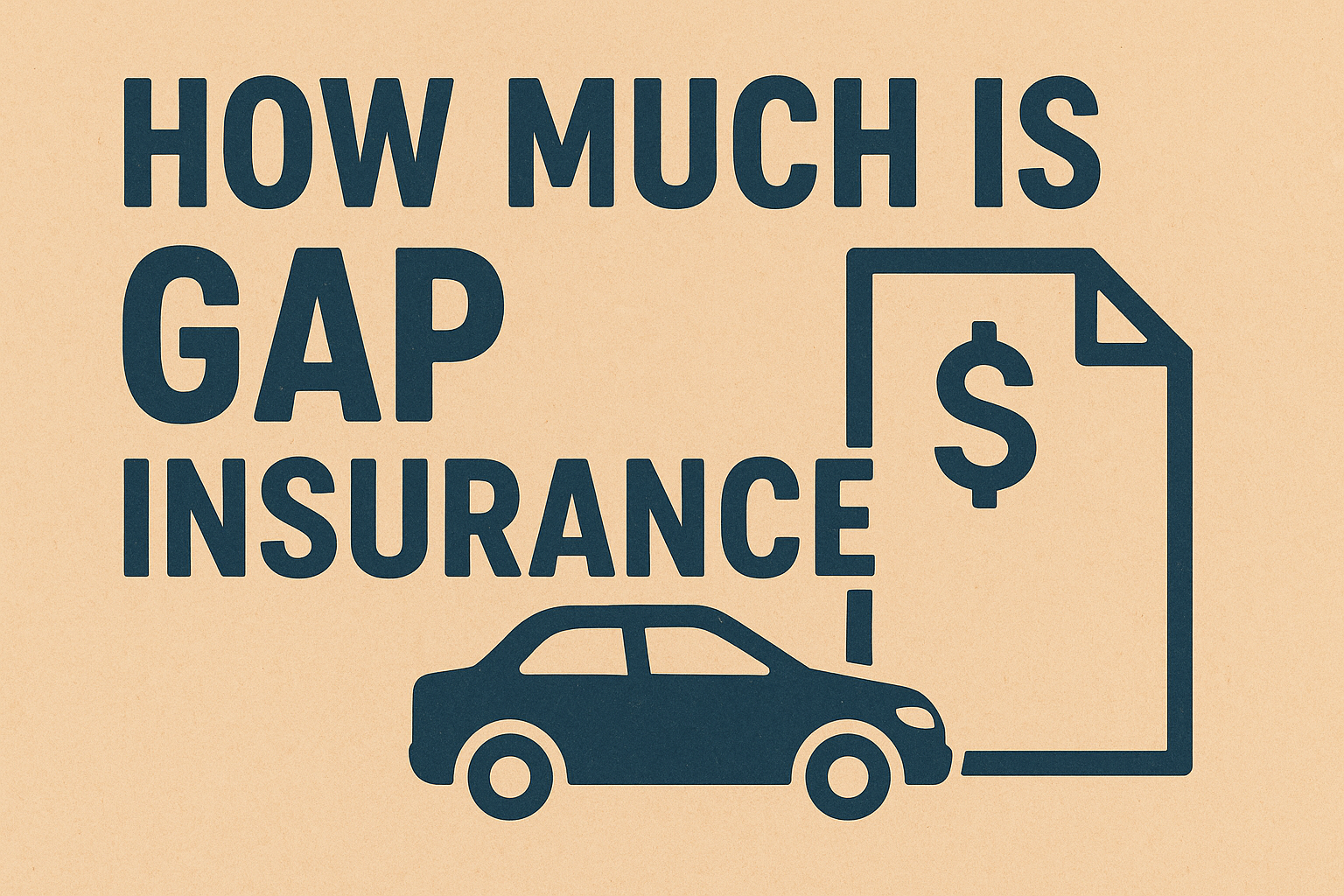
How Much Is Gap Insurance? A Complete Guide to Costs and Coverage
- mianamjad700800@gmail.com
- 0
- Posted on
When you buy or lease a car, understanding the various insurance options is crucial to protect your investment. One such option, often overlooked but extremely valuable, is gap insurance. If you’ve ever wondered, “How much is gap insurance?”, you’re in the right place. This guide will walk you through what gap insurance is, why you might need it, how much it typically costs, and factors that affect its price.
What Is Gap Insurance?
The Basics of Gap Insurance
Gap insurance, short for Guaranteed Asset Protection insurance, covers the “gap” between what you owe on your car loan or lease and the actual cash value (ACV) of your car if it gets totaled or stolen. This coverage is essential because cars depreciate quickly, and the insurance payout based on the car’s current value might be less than your outstanding loan balance.
Why Do You Need Gap Insurance?
Imagine you buy a brand-new car for $30,000, and a year later, it’s totaled in an accident. Your insurer might determine your car’s value has dropped to $20,000. But if you still owe $25,000 on your loan, you’re left with a $5,000 gap. Without gap insurance, you’d have to pay that $5,000 out of pocket.
How Much Does Gap Insurance Cost?
Average Cost of Gap Insurance
The cost of gap insurance can vary depending on several factors, but on average, it ranges from $400 to $700 for a policy purchased separately. If you buy gap insurance through your car dealer or as part of your lease agreement, it might cost less, sometimes as low as $20 to $40 per year.
Cost Breakdown by Purchase Method
-
Dealer or Lease Provider: Often bundled with your lease or loan payments, costing between $300 and $700 total or $20 to $40 annually.
-
Insurance Company Add-on: When added to your existing auto insurance policy, it usually costs an extra $20 to $50 per year.
-
Standalone Policy: Buying gap insurance independently can cost between $400 and $700.
Factors Affecting the Cost of Gap Insurance
Several factors influence the price you’ll pay for gap insurance:
Vehicle Type and Value
More expensive cars or luxury vehicles generally have higher gap insurance premiums because the amount you could owe over the vehicle’s depreciated value tends to be higher.
Loan or Lease Terms
The length and terms of your loan or lease impact gap insurance costs. Longer loans or leases might increase your risk exposure and therefore raise premiums.
Location
Insurance costs vary by state and region due to different regulations, risk factors, and local market conditions.
Your Credit Score
In some cases, your credit score can affect the cost of gap insurance if it is purchased through your insurer.
Where Can You Buy Gap Insurance?
From Your Car Dealer
Most new car dealers offer gap insurance at the point of sale or lease signing. It’s convenient but can be more expensive, and it’s important to carefully review the terms before buying.
Through Your Auto Insurance Provider
Many insurance companies allow you to add gap insurance as an endorsement to your existing auto policy. This option often comes at a lower price than dealer-offered policies.
Third-Party Providers
Several companies specialize in gap insurance, often offering competitive rates. When purchasing from a third party, make sure the policy covers everything you need.
Should You Buy Gap Insurance?
When Gap Insurance Makes Sense
-
Leasing a Vehicle: Lease agreements almost always require gap insurance because you don’t own the vehicle outright.
-
Low Down Payment or Long Loan Terms: If you put down less than 20% or have a long loan term, gap insurance can protect you from owing more than your car’s worth.
-
High Depreciation Vehicles: Cars that lose value quickly benefit from gap insurance.
When You Might Not Need Gap Insurance
-
Paid Off Your Loan: If your loan balance is less than or equal to your car’s value, gap insurance is unnecessary.
-
Used Cars with Small Loans: If your loan is small relative to the car’s value, the risk gap insurance covers is minimal.
How to Save Money on Gap Insurance
Compare Multiple Quotes
Shop around between dealers, insurers, and third-party providers to find the best price and coverage terms.
Improve Your Credit Score
A better credit score can lower insurance premiums across the board.
Bundle Your Insurance Policies
If adding gap insurance to your auto insurance, bundling with other policies (home, renters) might give you discounts.
Common Myths About Gap Insurance
Myth 1: Gap Insurance Is Only for New Cars
While gap insurance is most common for new vehicles, it can be useful for used cars with loans as well.
Myth 2: Your Standard Auto Insurance Covers the Gap
Standard policies pay the current value of your car, not what you owe, so gap insurance is necessary to cover any difference.
Final Thoughts on Gap Insurance Costs
Gap insurance offers peace of mind for those who want to avoid unexpected financial burdens after a total loss of their vehicle. While prices vary, the coverage is generally affordable and worth considering if your loan or lease terms leave you exposed to a gap between your car’s value and what you owe